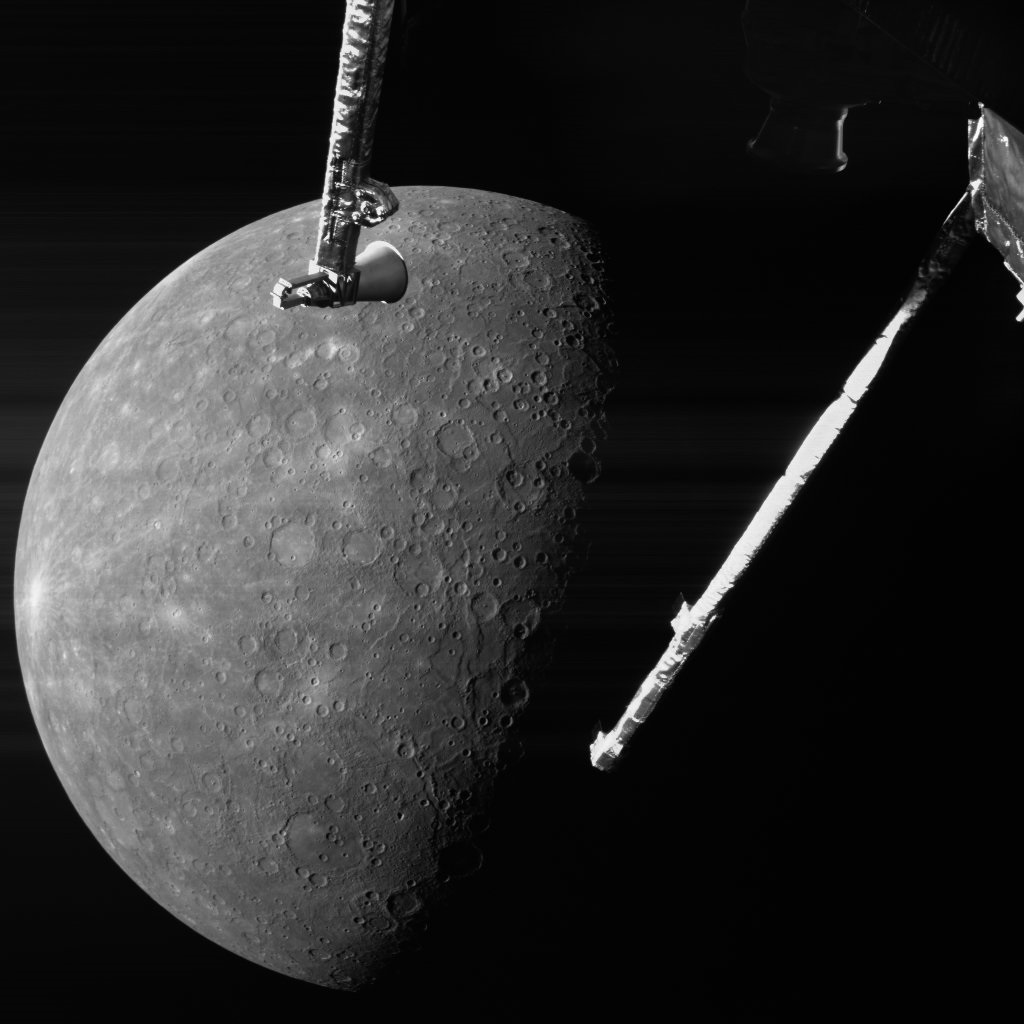ESA
As the BepiColombo mission passed by Mercury on September 4th, it gave us our best glimpse yet of the spacecraft’s final destination. A joint mission between the European Space Agency (ESA) and the Japan Aerospace Exploration Agency (JAXA), BepiColombo has completed its fourth gravitational-assist flyby, whizzing only 165 kilometers (103 miles) from the surface of the planet.
This flyby will be the spacecraft’s closest pass of Mercury, and it’s the first to provide a view of the planet’s south pole. Beyond providing new photos, the close pass was also a necessary part of orienting BepiColombo’s trajectory to Mercury’s more inclined orbit relative to Earth’s.
The flybys more generally provide a crucial stepping stone to reaching Mercury, While missions headed to the outer solar system use flybys to slingshot and pickup speed, BepiColombo instead uses the maneuvers to slow down, putting on the brakes so that the tiny world can capture the mission deep within the Sun’s massive gravity well.

ESA
Launched in 2018, the mission takes its name from Italian scientist Giuseppe “Bepi” Colombo. BepiColombo is a first of its kind, with two orbiters riding in a stacked configuration aboard the Mercury Transfer Module (MTM). ESA’s Mercury Planetary Orbiter and JAXA’s smaller Mercury Magnetospheric Orbiter will separate once the mission is inserted into orbit around Mercury in late 2026.

ESA
The flyby provided a unique opportunity for both teams. “We get to fly our world-class science laboratory through diverse and unexplored parts of Mercury’s environment that we don’t have access to once in orbit,” says Johannes Benkhoff (ESA-BepiColombo Project Scientist) in a recent press release. “[We’re] also getting a head start on preparations to make sure we will transition into the main science mission as quickly and smoothly as possible.”
Ten of the orbitetrs’ 16 science instruments were switched on during this week’s close pass. Particle, plasma, and magnetic-field-monitoring instruments documented the local environment throughout the flyby. Other instruments — including the main science camera on ESA’s orbiter — are shielded until separation, but the three black-and-white cameras on Japan’s orbiter, meant to monitor the mission, were turned on to witness the flyby.

ESA
The latter caught two amazing, low-angle views of curious double-peak ring crater basins on the surface of Mercury:

ESA
This latest, close flyby came about because of a glitch, which turned up last April. Controllers suspect that unanticipated current levels between the solar arrays and the electrical distribution system is causing lower power levels to the electric propulsion system. As a result the spacecraft’s thrusters aren’t working at full power. In response to this problem, the team altered the mission profile for a closer flyby. That change also results in an arrival at Mercury in late 2026 — 11 months later than previously planned.
Once in orbit, the missions will monitor Mercury from the inside out, using various instruments to explore everything from its interior structure to surface geology and formations, along with the planet’s magnetic field, magnetosphere, and tenuous exosphere.
The Mercury mission represents a first for Europe and Japan, though humankind has visited the planet previously. NASA completed the first close flyby past Mercury in 1973 with Mariner 10 and sent the first mission to orbit Mercury in 2011. That orbiter, named Messenger, also became the first human artifact to reach the planet when it ended its mission on April 30, 2015, crashing onto the surface of the innermost world.

ESA
Thus far, BepiColombo has made one flyby past Earth in 2020, two past Venus in 2020 and 2021, and three past Mercury in 2021, 2022 and 2023. Two more Mercury flybys are ahead for the intrepid mission: one this coming December and a final flyby in January 2025. Orbital insertion around Mercury is now set for November 2026.
It will have been eight years in the making, but BepiColombo’s arrival at Mercury will be worth the wait.
We’ll include more images as they become available, but you can also check ESA’s Planetary Science Archive site, where raw images are posted.


